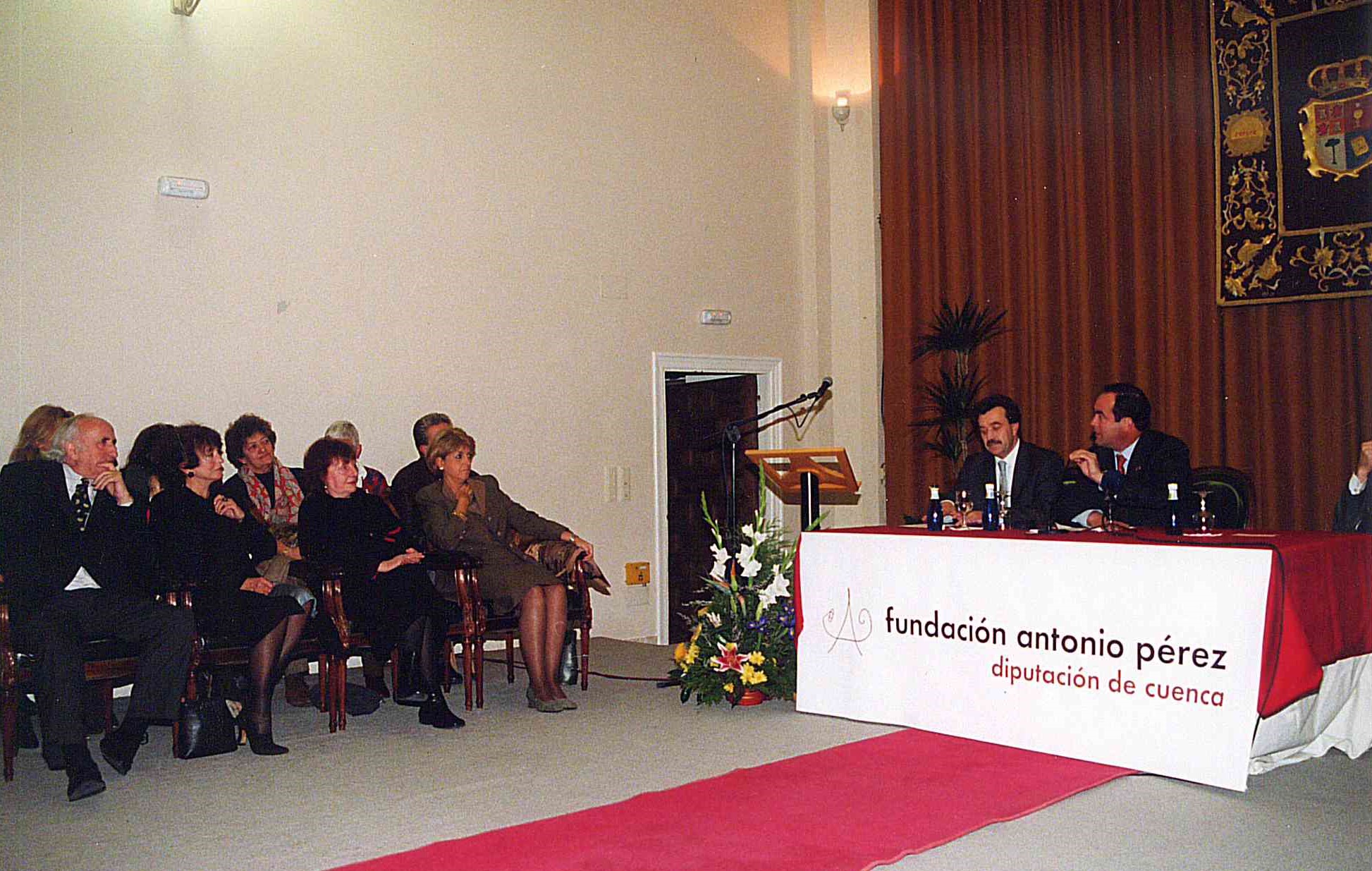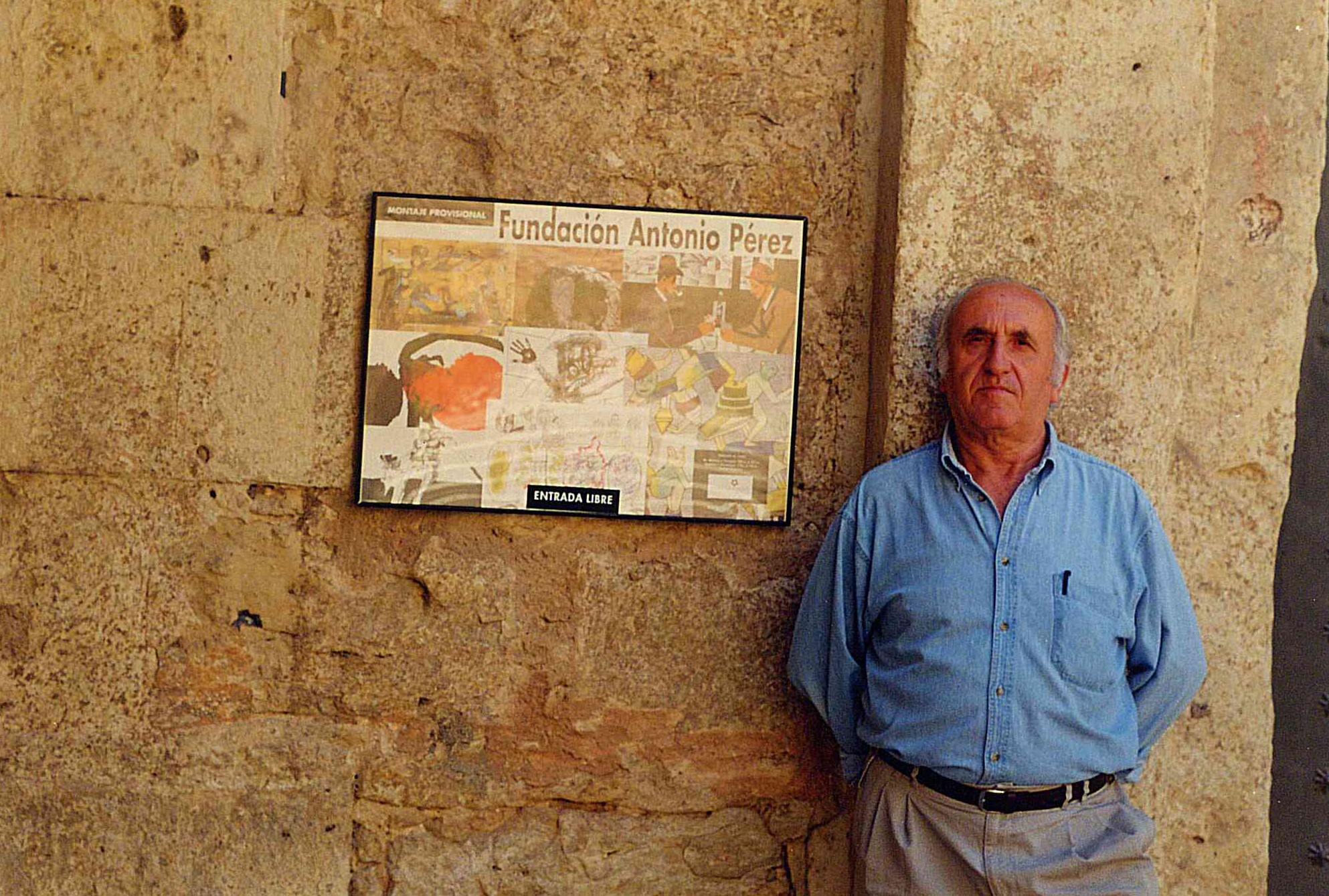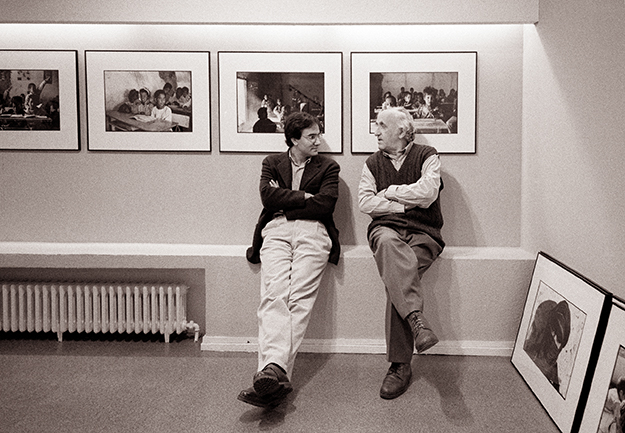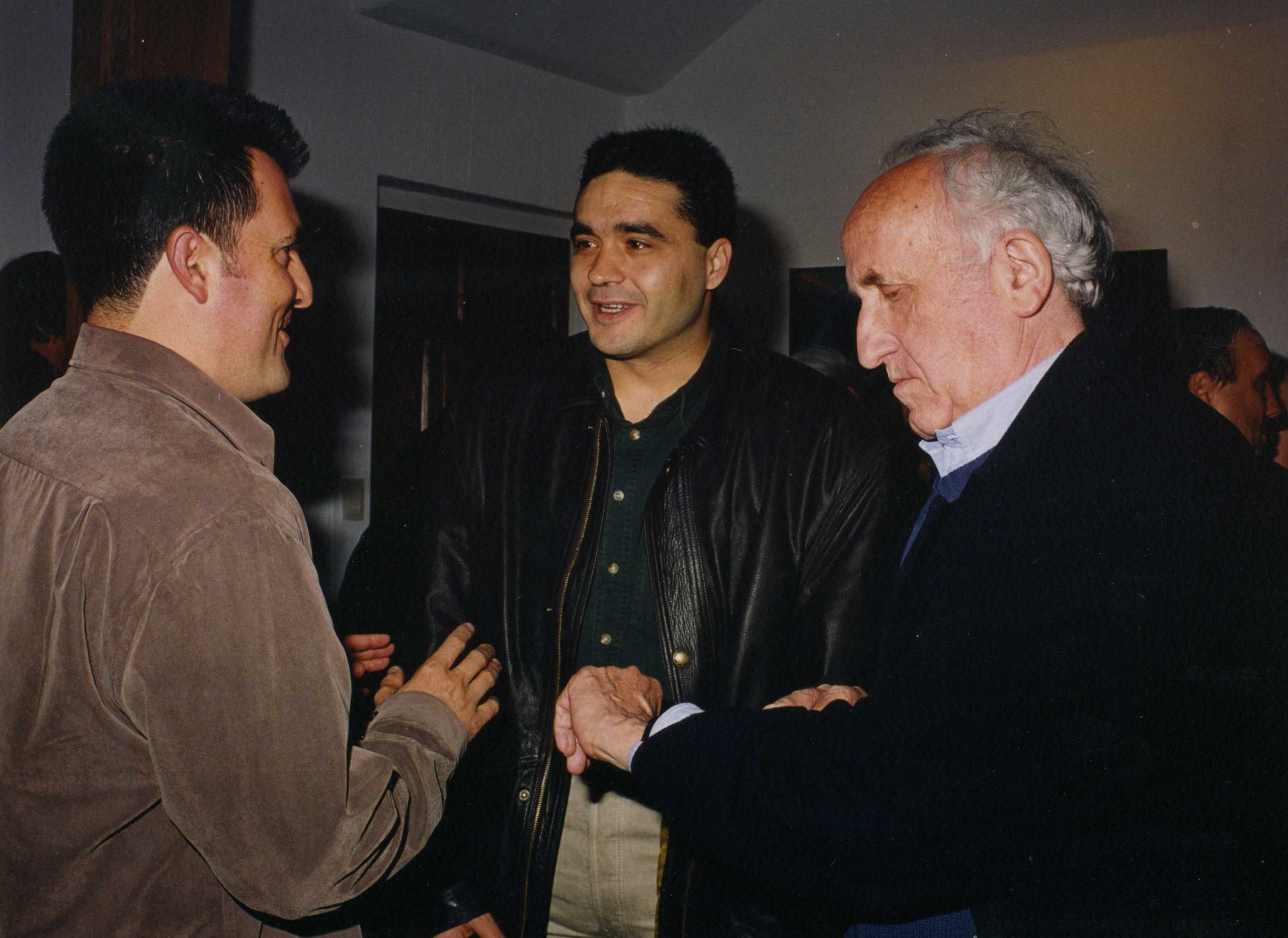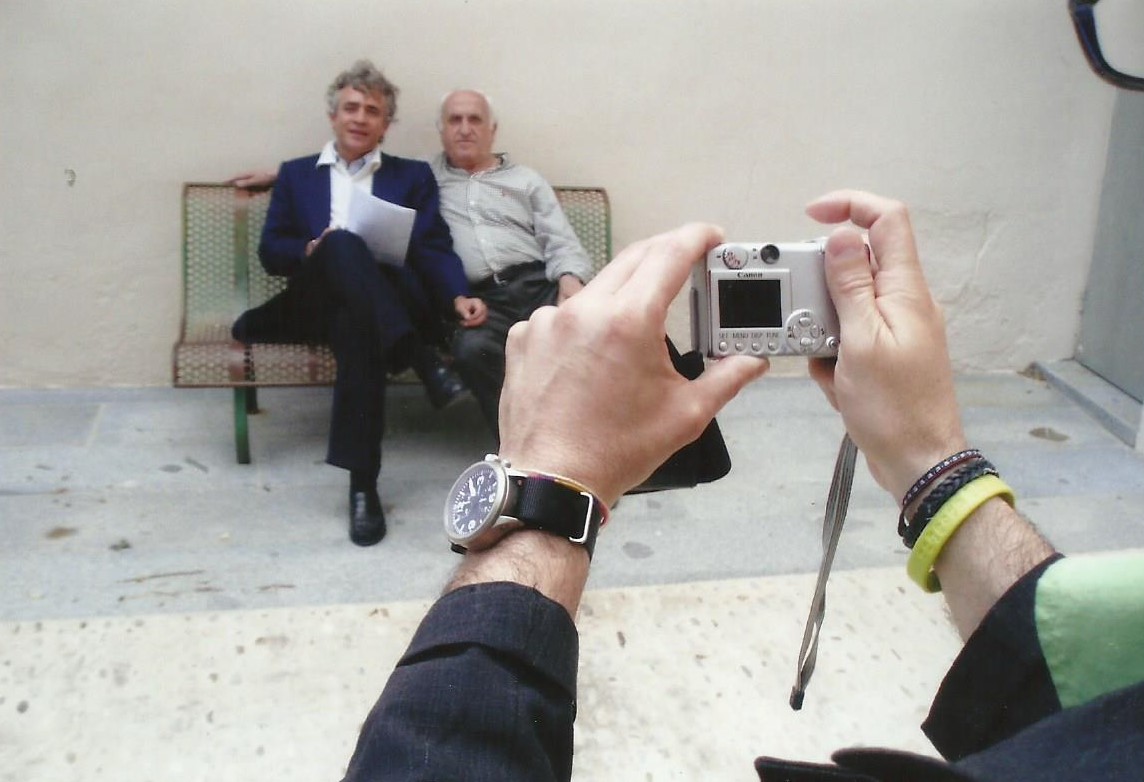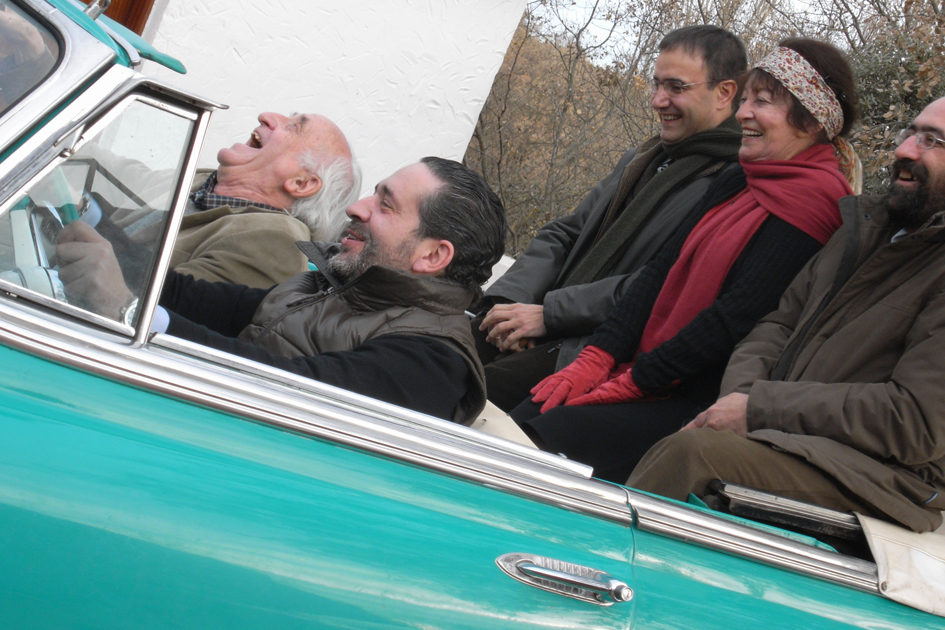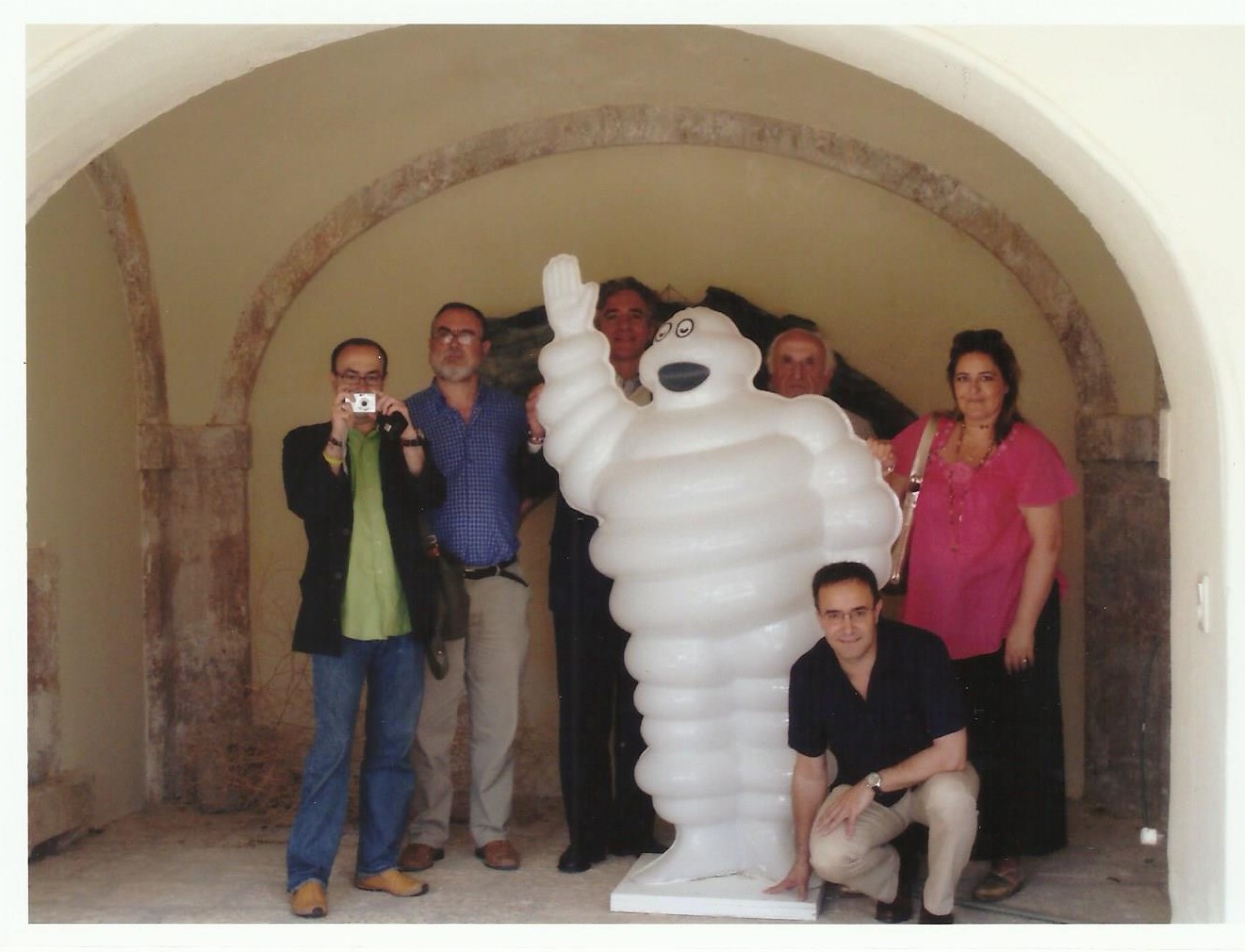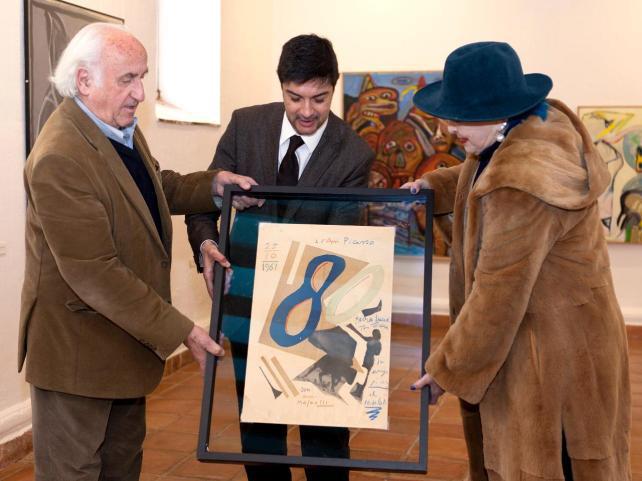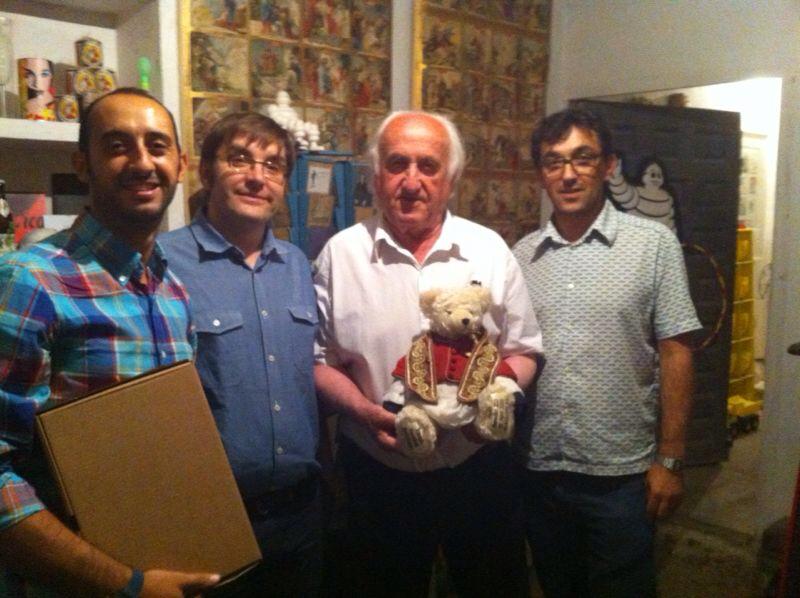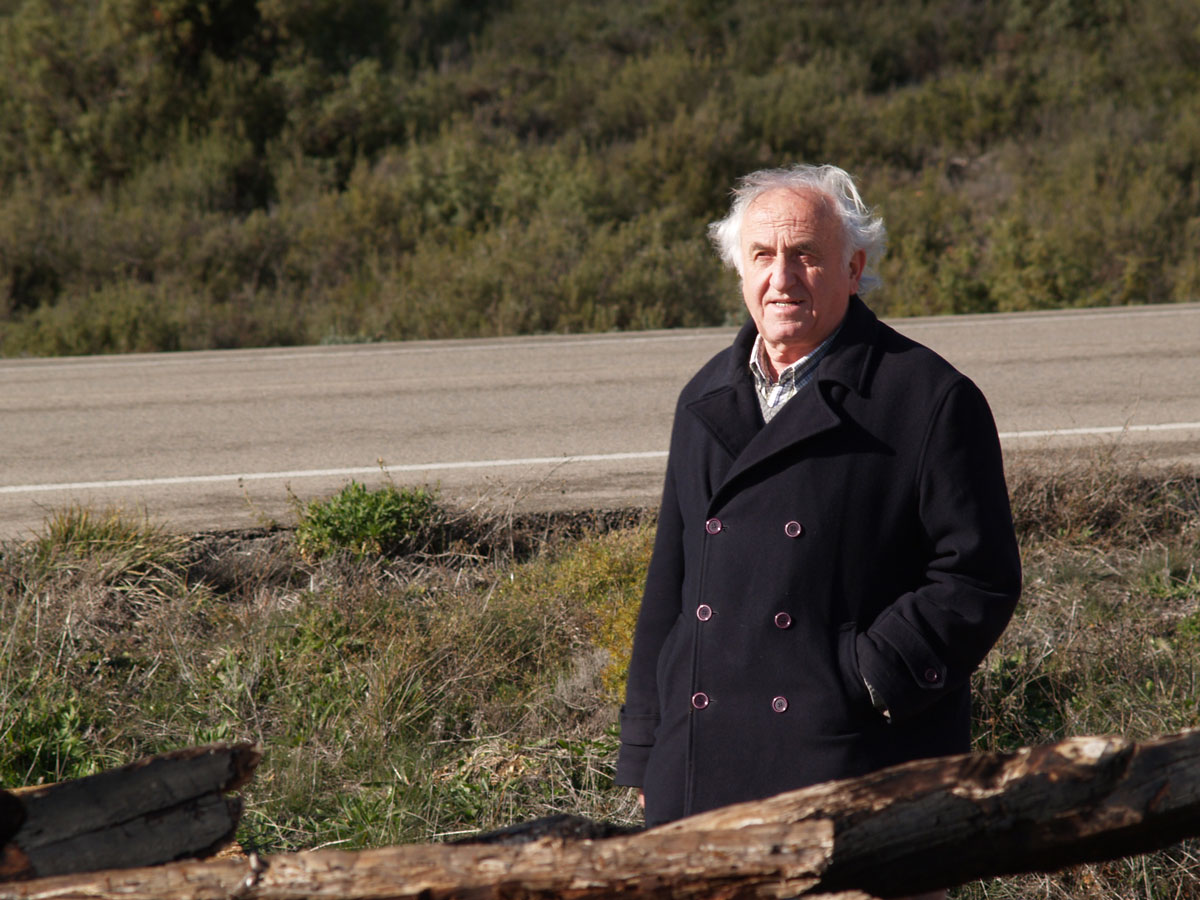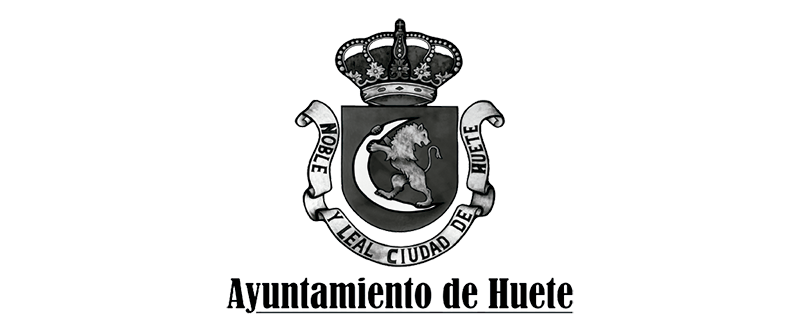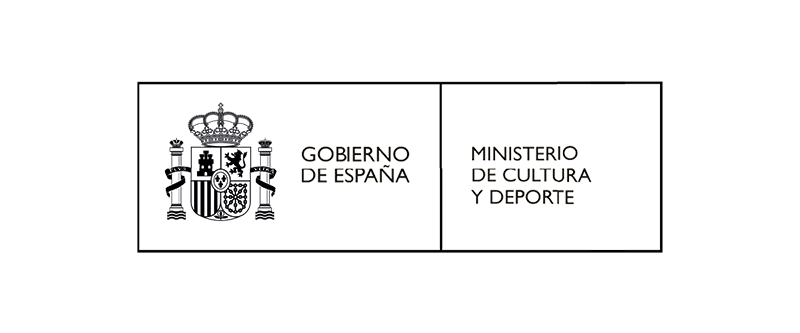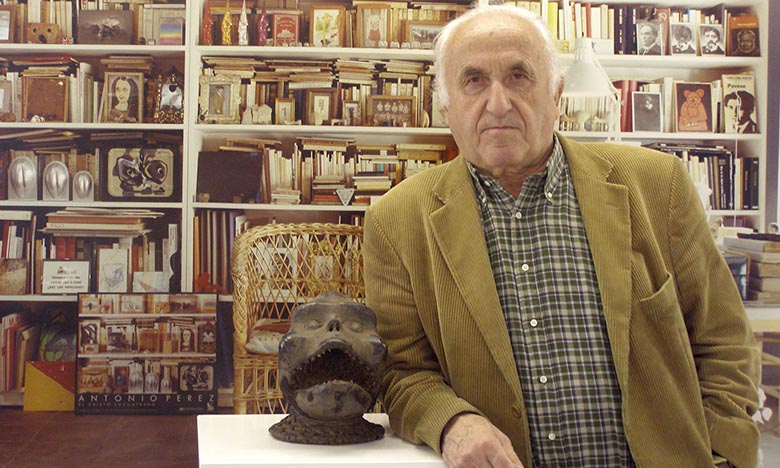
Antonio Pérez was born in Sigüenza (Guadalajara) in 1934, and was the youngest of 12 siblings.
1952 He registered in the Faculty of Arts at the University of Madrid. He met Francisco Mateos, he befriended J.A. Gaya Nuño and also had his first few meetings with Pío Baroja and Vicente Aleixandre.
1954 He published his first poem in the El pájaro de paja journal, and one year later began to publish in Aldebarán. That same year, in August, he went on a walking tour along the course of the River Duero. He wanted to be a poet; the people who know him know that he is a poet, as he already was when as a very young man he decided to travel the length and breadth of Spain by following its river courses.

1955 He published in Aldebarán, a journal about poetry, literary criticism and culture. That same year, in August, he went on a walking tour along the course of the River Duero. These sojourns, and a few others, earned him the nickname of “River-walker” from Juan Marsé.
1956 He visited E. Hemingway at El Escorial and walked the river Tajo in 1957. In Cuenca, he met the painters Manolo Millares and Antonio Saura. He would subsequently travel to Paris, where he settled definitively until 1975.
1959 He published Verso sin pan, verso perdido. That same year he went on a trip to Greece and Italy, and on his return to Paris he joined the PCE (Communist Party of Spain).
1961-1962 He and José Martínez created the Ruedo Ibérico publishing house. Antonio Pérez took charge of the poetry and novel awards, as well as of the publication of the anthologies España canta a Cuba, Versos para Antonio Machado and Episodios Nacionales by Gabriel Celaya.
His relationship with the publishing house began when he met José Martínez in the Old Navy café in the Boulevard Saint-Germain in Paris. José Martínez invited Antonio to join the publishing house as a collaborator, dealing with aesthetic and literary work, collaborating as a director of the poetry collection and also providing illustrations by his artist friends for the publishing house’s output.
1966 He worked in different printing houses and as a translator and later took up employment in Maspero’s “La joie de lire” bookshop in Paris until he returned to Spain.
1967 He acted in the film O Salto by Christian de Chalonge, scripted by Roberto Bodegas, who was also the production assistant.
1968 He played an active role in May 68.
1975 He returned to Cuenca, this time for good, where he purchased a house in the street called San Pedro, near the home of his friend and long-time neighbour Antonio Saura.

1978 He created the Antojos Publishing House, whose first item was the book published with texts by J. Miguel Ullán and silkscreen prints by Antonio Saura under the title of Responsos, which would be followed by a further fifteen books involving the participation of other artists, Equipo Crónica, Bonifacio Alfonso, Albert Ràfols Casamada or Joan Hernández Pijuan, to name but some.
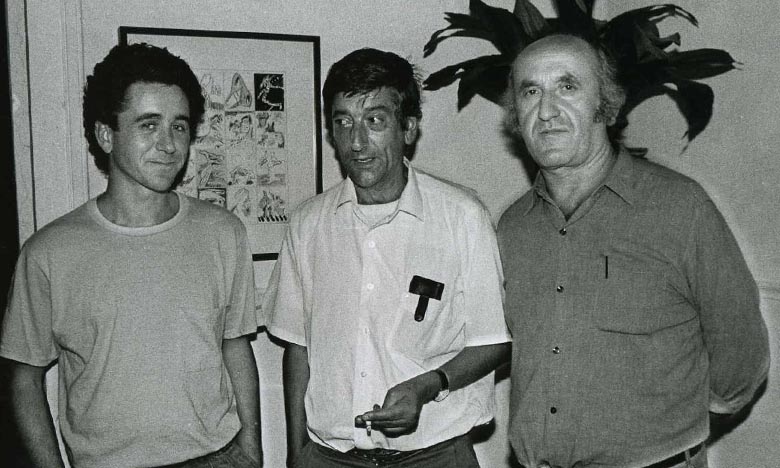
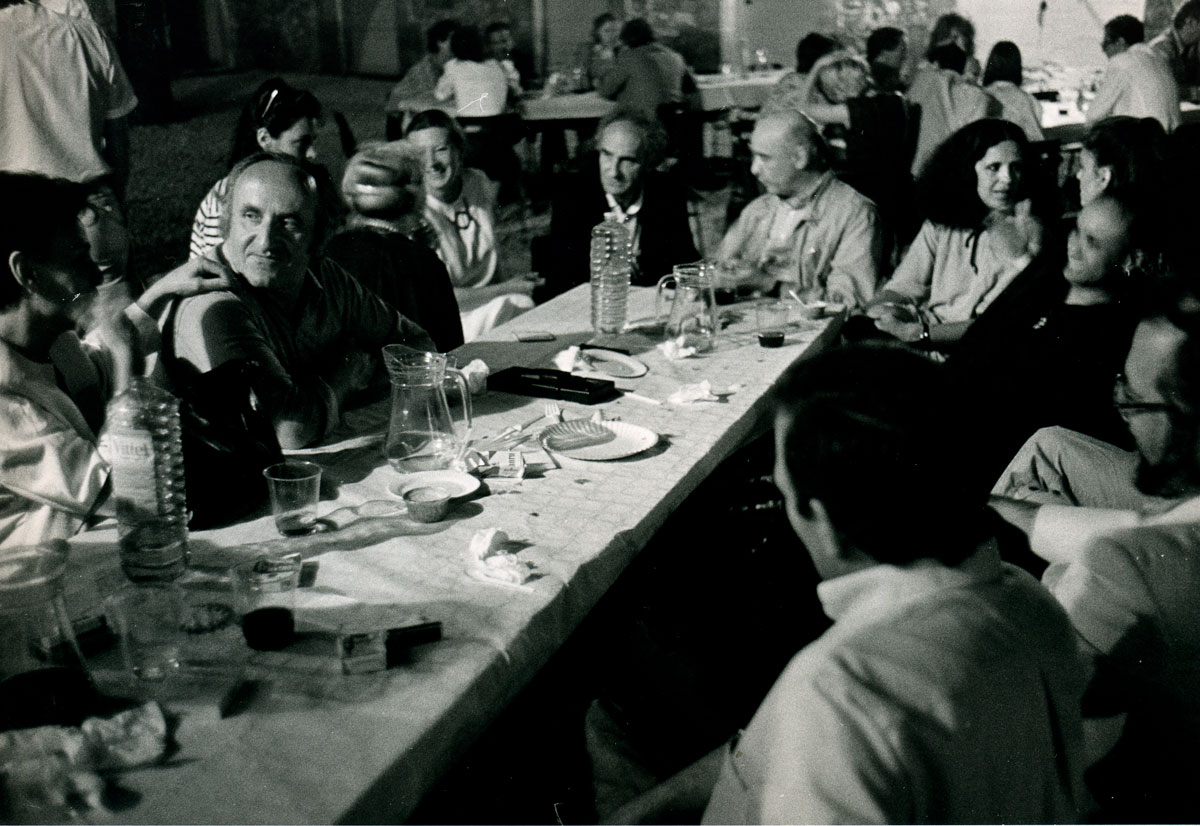
1985 Together with Julio Ollero and Antonio Saura, he directed some plaquettes with texts by Marcel Cohen and Juan Marsé. Several exhibitions dedicated to Antonio Pérez’s Found Objects were staged in the Círculo de Bellas Artes de Madrid (1994), the County Council of Huesca (1997), the Museum of Teruel (1997) and the Llotgeta de Valencia (1997).
1992 First exhibition by the Antojos Publishing House, 14 books by the Antojos publishing house. Former Convent of the Carmelites (now the Foundation), Cuenca.
1994 He exhibited his Found Objects in the Círculo de Bellas Artes of Madrid with the title Antonio Pérez y el Objeto Encontrado between 22 November and 29 December.
1997 Antonio’s Objects did the rounds of different cities, they reached the County Council of Huesca, followed by the Museum of Teruel and finally that year they were showcased at the Llotgeta de Valencia.
That same year he was awarded “Cuenca’s Heritage of Mankind” Medal.
1998 The Antonio Pérez Foundation was officially opened in Cuenca, exhibiting the collection of paintings, drawings, graphic work and found objects donated by Antonio Pérez to the County Council of Cuenca.
He published jointly with the Tabelaria publishing house and, through the Antojos Publishing House, the book titled El Mundo del Ritmo, a limited edition produced by Eduardo Mendoza and Carlos Pazos.
2002 He gave the talk The Found Object as a sculpture in the Architecture and Bionics seminar organised by the County Council of Cuenca and staged in the FAP from 15 to 20 July.
He was honoured with the “Protagonistas de Castilla-La Mancha” award by Onda Cero. He shared this award with the actress Sara Montiel, among others.
2003 The Foundation expanded its exhibition area with two new rooms: the Manolo Millares Room and the Lucebert Room.
2003 Javier Semprún wrote El personaje encontrado. Conversaciones con Antonio Pérez en la Cuenca de su Fundación, as part of the Atalaya collection of the County Council of Cuenca.
2004 He participated in the 11th Course on Architecture and Bionics held at the FAP, with the Conference entitled Sobre la mirada, from 19 to 24 July.
He participated in the exhibition The Poetics of Cuenca. Forty years on (1964-2004), curated by Alfonso de la Torre in the Centro Cultural de la Villa in Madrid. From 5 December, 2004 until 16 January, 2005.
Antonio Pérez received the “Protagonistas de Castilla-La Mancha” award from the Cadena Ser.
2006 The Graphic Work Museum of San Clemente (San Clemente, Cuenca), the first sub-site of the Antonio Pérez Foundation, was opened.
2007 Juan Miguel González produced the film Presagio de la luz, which narrates the vital and creative process of Antonio Pérez and his inseparable found objects. Presented in the County Council Palace. Cuenca. 8 February.
2008 He participated in the seminar Herencia de Mayo del 68. Participación y Democracia en la Universidad, with the conference titled Carteles y vivencias del Mayo del 68. Organised by the UCLM, held from 6 to 8 May in Ciudad Real.
Luzán, the Association of Housewives, Consumers and Users of Cuenca, honoured him with its Annual Award for his work to further art.
Antonio’s Found Objects travelled to Gijón with the photographer Santiago Torralba. Galería Arte and Food. 24 October.

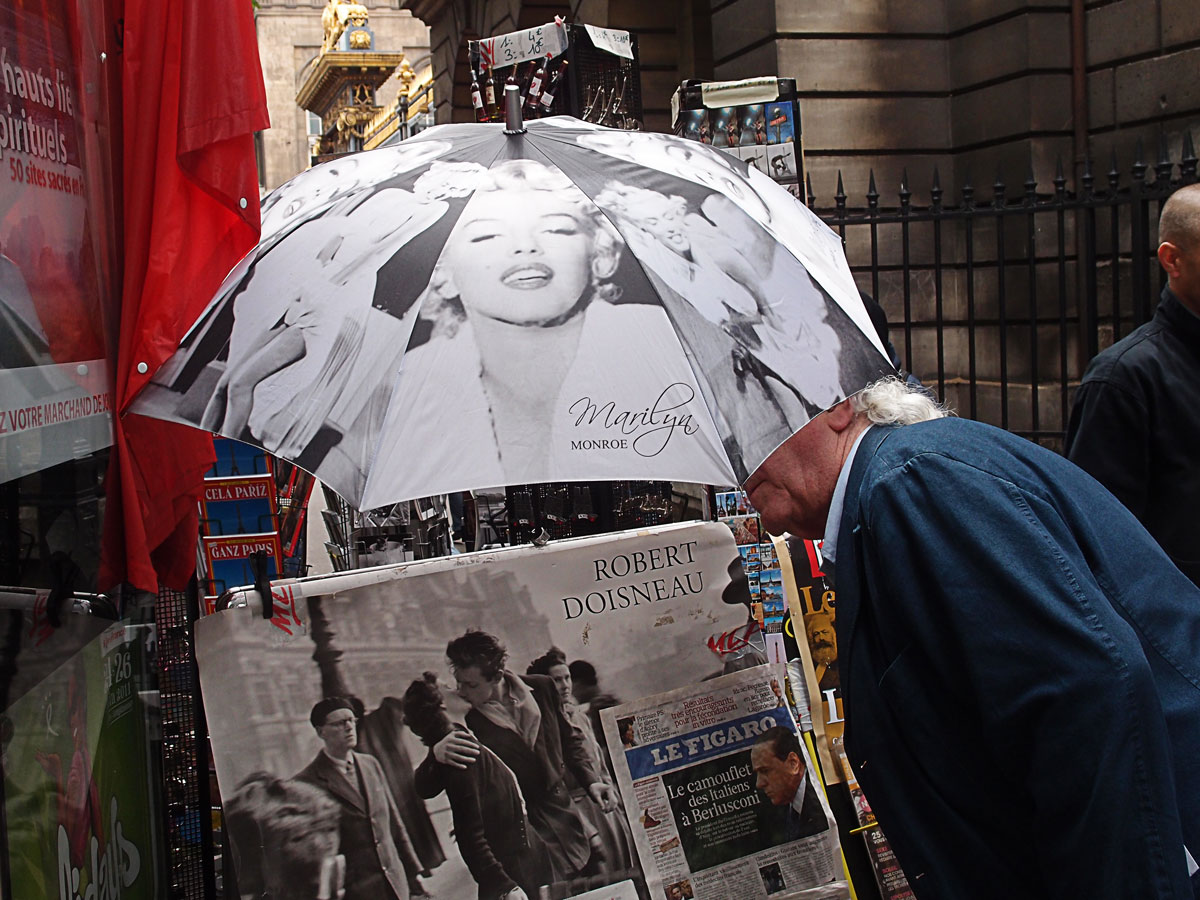
2009 He participated in the testimonial to Juan Marsé for the Cervantes Award at a talk at the University of Alcalá de Henares on 24 April.
Bodegas Calzadilla and the Chef Alberto Herráiz, who managed the El Fogón restaurant, created the Antonio Pérez wine that was premiered at the Foundation on 18 May.
On 29 September, the University Board of Trustees honoured him with the Cardenal Gil de Albornoz Gold Medal.
2010 He received the “Quijote Universal” award in Mota del Cuervo (Cuenca), and in December that year the Illustrious County Council of Guadalajara bestowed upon him the honorary distinction of Favourite Son of the Province of Guadalajara by dint of his acknowledged artistic merits and his contribution to art in our country.
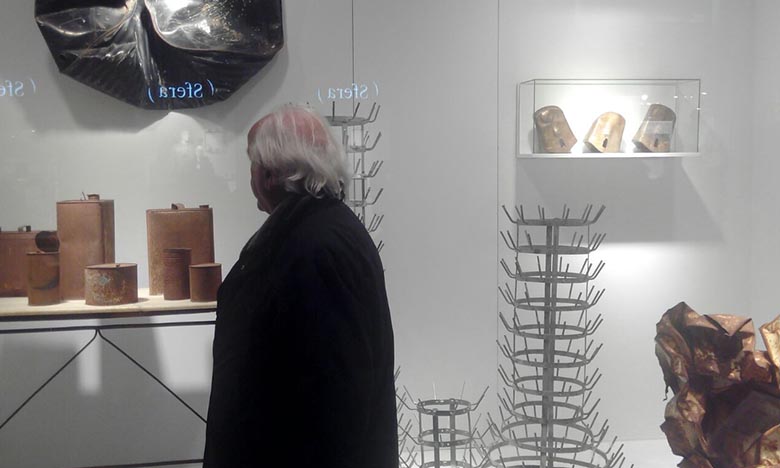
2010 The Antonio Pérez Foundation officially opened the Found Object Museum (San Clemente, Cuenca) which features Antonio Pérez’s creative activity. This museum was closed in 2012.
2011 The Found Object documentary about the life of Antonio Pérez, directed by César Martínez Herrada and produced by Flamenco Films, was premiered.
2012 His life and works reached the silver screen through the creation of the Found Object documentary by César Martínez Herrada. The documentary was screened in different parts of Spain.
The French Institute of Valencia staged an exhibition about him entitled 69 Objetos de Deseo, as well as a round-table about him.
2013 He participated in the Zona de Obras collective exhibition at the Elanaveva cultural venue in Cuenca between 19 January and 17 March.
On 7 March, the UCLM organised a Meeting-Course about him, imparted by the professors Ana Martínez-Collado and Ana Navarrete.
2015
Following the terrorist attack on the Charlie Hebdo magazine in which several of his friends perished, Antonio decided to organise a tribute to them in one of the FAP’s display cabinets by exhibiting several journals and posters linked to the magazine from his private collection.
Towards the end of 2015 he was appointed Honorary Member of the Library of Castile-La Mancha.

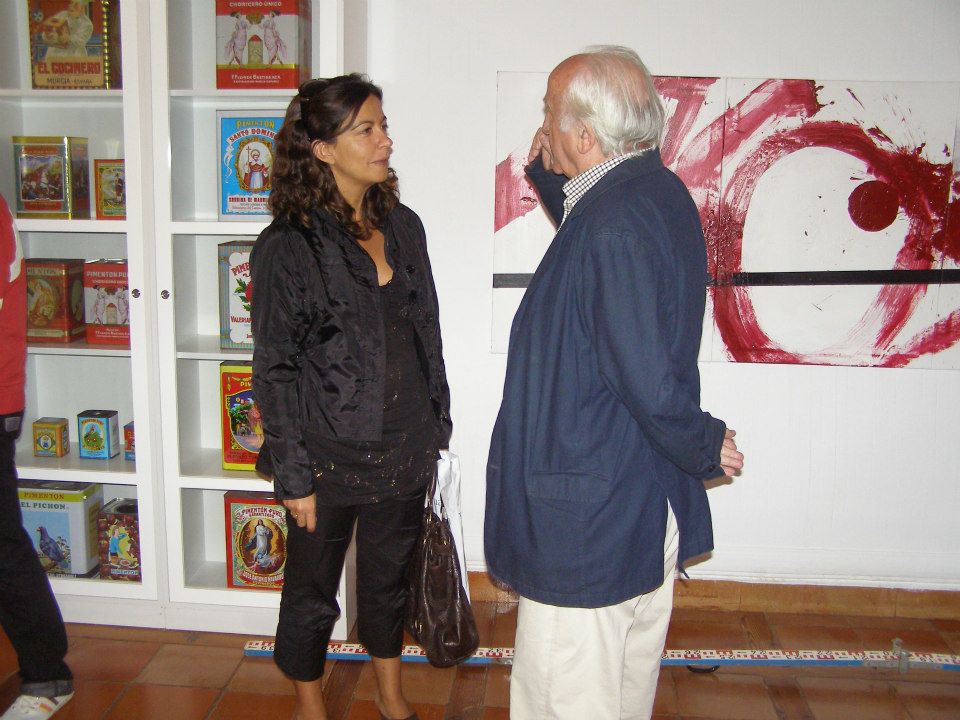

2016 Between 22 February and 15 March, he participated in Los otros Artistas project as guest artist, and his work was featured in one of the shop windows of the El Corte Inglés department store in calle Preciados de Madrid as part of the ARCO Madrid programme.
2017 He participated in the Venga Lalata collective exhibition between 9 May and 4 June.
He was named Favourite Son of Castile-La Mancha, together with Francisco Luzón and Alberto de Pinto, on 31 May.
On 9 October, his house and his Foundation were featured in the Streetviú programme of Movistar Canal 0.
2018 The artist Vicente García Plana organised a tribute to him through Yo escribí una carta a Antonio Pérez, a work produced for the El Objeto de la memoria exhibition in the Pablo Serrano Museum of Saragossa.
The collectors Irene Cábez and Ignacio Muñoz organised a testimonial to Antonio Pérez with the Indómita Luz exhibition. May 2018
On 19 November, he received the badge of honour, designed by Luis Muro, from the Residents’ Association of the Old District of Cuenca.
The FAP celebrated its 20th anniversary by organising a series of activities, including a tribute to the artist.
2019 The FAP participated with the Antonio Pérez’s work in the Animales de compañía: imagen y semejanza exhibition by Raúl Hidalgo at the School of Art Cruz Novillo. March
The City Council of Cuenca named Antonio Pérez Adopted Son of the city, the highest distinction awarded by the Council, together with that of Favourite Son, that can be granted by the City Council.
The 7th Edition of the Cope Cuenca radio station Awards acknowledged Antonio Pérez and his career.
2020 During the pandemic, the world of culture and art sent a message of encouragement to Antonio Pérez through the challenge launched by the FAP.
2021 The City of Cuenca consortium paid tribute to Antonio through the creation of “Antonio Pérez’s Corner”, a space on the way down from the Plaza del Trabuco to the Ronda Julián Romero, which became the city’s tribute to the artist.
Photographs: Personal Archive of Antonio Pérez, Santiago Torralba, Ángel Albaladejo, FAP Archive

